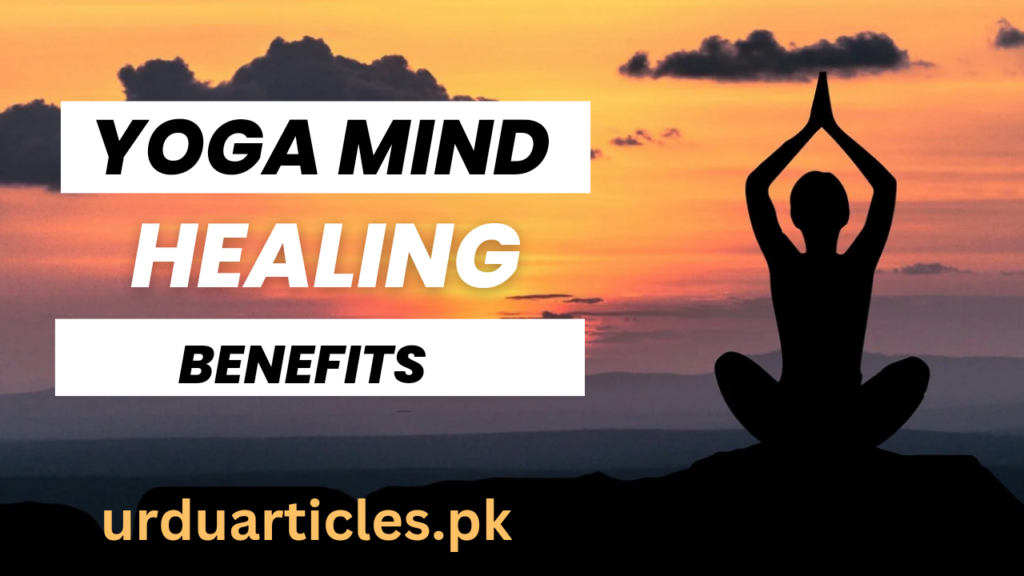Benefits of Yoga and Meditation

Benefits of Yoga. Yoga is a physical, mental, and spiritual practice originating from ancient India. It involve various posture, breathing exercises, and meditation to promote physical and mental well-being. Many people practice yoga as a form of mind-body exercise, with the aim of reducing stress, improving flexibility and balance, and cultivating inner peace. The meditative aspect of yoga is thought to have a calming effect on the mind and can help alleviate symptoms of depression, anxiety, and other mental health conditions. Practicing yoga can be a holistic approach to promoting overall health and well-being.
1. Introduction to Yoga and its Benefits for mind Healing and body.
Yoga is a physical, mental, and spiritual practice originating in ancient India. It involves a series of postures, breathing exercises, and meditation to improve physical strength, flexibility, and balance, as well as mental peace and well-being. Some of the benefits of yoga for the mind and body include:
- Physical benefits: Improve flexibility, increase strength, reduced stress and tension, better posture, and improve balance and coordination.
- Mental benefits: Reduced anxiety and depression, improve focus and concentration, increased self-awareness, and enhance feelings of calm and relaxation.
- Spiritual benefits: Improved sense of connection with self and others, greater sense of inner peace and well-being, and an increased understanding of the mind-body connection.
Practicing yoga regularly can help promote physical and mental health, and is suitable for people of all ages and fitness levels.
2. The history of Yoga, and its Origins in India?
Yoga is an ancient Indian practice that has its roots in Hinduism and dates back over 5,000 years. It was developed as a spiritual discipline to promote physical and mental well-being, as well as union with the divine. The original texts of Yoga, known as the Yoga Sutras, were written by the sage Patanjali around 400 CE, and they outline the eight limbs of Yoga, which include ethical guidelines, physical postures, breath control, and meditation. Over the centuries, Yoga has evolved and spread beyond India to become a popular form of exercise and stress-relief throughout the world.
3. Various types of Yoga Practiced Today.
There are several types of yoga that are practiced today, including:
Hatha Yoga: This is a physical type of yoga that focuses on posture (asanas) and breathing exercises (pranayama).
Vinyasa Yoga: This is a dynamic type of yoga that links movement and breath in a flowing sequence.
Ashtanga Yoga: This is a physically demanding form of yoga that involves a set sequence of postures that are performed at a fast pace.
Bikram Yoga: This is a hot yoga practice that involves performing 26 postures in a room heated to 105°F.
Iyengar Yoga: This type of yoga places a strong emphasis on proper alignment and the use of props, such as blocks and straps.
Kundalini Yoga: This type of yoga focuses on awakening the energy at the base of the spine and involves dynamic movements, breathing exercises, and meditation.
Yin Yoga: This is a slow-paced type of yoga that involves holding postures for several minutes to help increase flexibility and deepen relaxation.
These are just a few of the many types of yoga that are practiced today, and each type offers its own unique benefits and approach to practicing yoga.
4. Physical and mental benefits of Yoga
Yoga offers both physical and mental benefits.
Physical benefits include:
- Increased flexibility and balance.
- Improved respiratory, cardiovascular and muscular function.
- Pain relief and management of chronic conditions.
- Better posture and body alignment.
- Boosted immunity.
Mental benefits include:
- Decreased stress and anxiety.
- Improved mood and overall sense of well-being.
- Enhanced mental clarity and focus.
- Increased self-awareness and self-esteem.
- Better sleep quality.
Yoga is a holistic practice that can lead to improved physical and mental health. And has been shown to be beneficial for a wide range of individuals, regardless of age or fitness level.
5. Yoga poses and how to execute them correctly.
Yoga is a practice that involves various physical postures, breathing techniques, and meditation. Here are some popular yoga poses and how to perform them correctly:
- Downward-Facing Dog (Adho Mukha Svanasana) – Start on your hands and knees, with your hands shoulder-width apart and your knees hip-width apart. Lift your hips up, straightening your arms and legs. Your body should form an inverted V shape. Keep your head relaxed and your gaze towards your navel.
- Warrior I (Virabhadrasana I) – Start in a lunge position, with your front foot pointing forward and your back foot turned at a 90-degree angle. Lift your arms overhead and gaze forward. Keep your hips facing forward and your core engaged.
- Warrior II (Virabhadrasana II) – Start in a lunge position, similar to Warrior I. Turn your front foot to the side, and extend both arms out to the side, one in front of you and one behind. Keep your hips facing forward and your gaze over your front hand.
- Tree Pose (Vrksasana) – Start in a standing position. Shift your weight to one foot and place the sole of your other foot on your inner thigh. Press your foot into your thigh and press your thigh back into your foot to balance. Raise your arms overhead.
- Child’s Pose (Balasana) – Start on your hands and knees. Lower your hips back towards your heels, stretching your arms out in front of you. Rest your forehead on the floor and relax your entire body.
Remember to breathe deeply and move slowly and mindfully through each pose. It’s important to listen to your body and modify the poses as needed to avoid injury.
6. Importance of meditation in Yoga practice.
Meditation is considered a crucial aspect of Yoga practice as it helps to calm the mind and bring inner peace. Through meditation, practitioners aim to cultivate mindfulness and self-awareness, leading to reduced stress, improved concentration, and enhanced mental and physical well-being. Additionally, meditation can aid in developing a deeper understanding of one’s self and their relationship with the world, promoting self-reflection, and spiritual growth. In summary, meditation plays a significant role in creating balance and harmony in the mind and body, making it an essential component of the holistic approach of Yoga.
7. Yoga as a form of mind healing.
Yes, yoga can be a form of mind healing. By combining physical postures, breathing techniques, meditation, and mindfulness, yoga helps to reduce stress and anxiety, improve mood, and increase relaxation and self-awareness. These practices can help to calm the mind, reduce negative thoughts and emotions, and promote mental clarity and overall well-being. However, it is important to keep in mind that yoga is not a substitute for medical treatment and should be used as complementary to conventional medical care.
8. Conclusion of the benefits of Yoga for mind and body.
Yoga has been found to provide numerous benefits for both the mind and body. For the body, yoga can increase flexibility, strength, balance, and reduce stress and pain. Yoga has been shown to decrease anxiety, depression, and improve overall well-being, mental clarity and mood. Practicing yoga regularly can also lead to a deeper connection between the mind and body, and can enhance self-awareness and mindfulness.
Check Out : Earn Online Money Without Investment
Check out : Does Youtube Shorts Make Money
Read out : Anti Money Laundering Act and Regulations

Through my words, I Strive to evoke emotions, challenge Norms, and inspire change. Whether it’s delving into the complexities of human relationships, shedding light on social issues, or celebrating the beauty of our cultural heritage, I aim to create a lasting impact. With every word, I weave together stories that resonate with audiences, sparking conversations and fostering a sense of unity. Being a Pakistani content writer is not just a profession; it’s a responsibility to uplift and empower through the power of storytelling.

